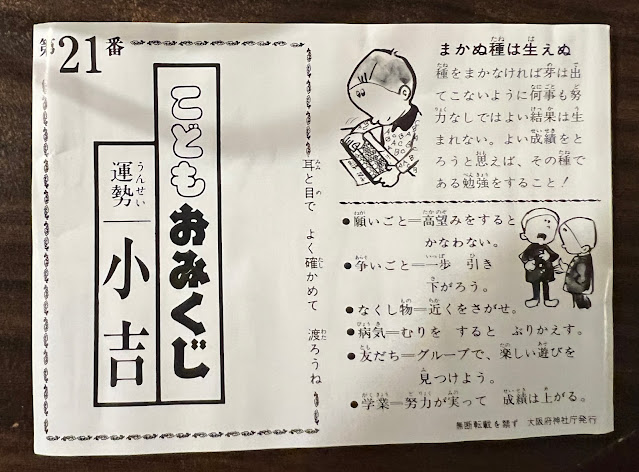After buffet breakfast at the hotel, I took the train back to Fukuroi. From the station it was another kilometre or so just to get back onto the Tokaido – or so I thought. When I checked the map in the guidebook it turned out I’d walked further than I needed. Never mind.
Outside a temple, a group of jizo looked particularly handsome in the early-morning light:
So much care has gone into this little tableau, from the hats and bibs to the fresh flowers.
A fine example of an ichirizuka (a reconstruction, as it turned out) was accompanied by a plaque that carried an English summary:
Opposite the ichirizuka, a shrine seemed like a good place to pay my respects for the day. As I was leaving, I was greeted by a gentleman I’d noticed at Fukuroi station and noted as a possible fellow walker. Yamada-san had, in turn, spotted me at the station, and having caught up to me at the shrine asked the usual questions. He seemed astonished that I was walking the entire Tokaido in one go (confirming the sense I’ve had for some time that’s it’s not that common an undertaking) and by the sort of distance I was covering each day. He also plans to walk the whole thing, but at a much more leisurely pace: he did the section from Tokyo to Shizuoka last year over several weeks, and this year I think hope to get as far as Nagoya. He wished me good luck and hoped we might bump into each other again down the road. Sadly, that didn’t happen – at least not today.
Most of today’s walk was very flat, but there were a couple of hills in the early stages. From the top of one of them I had a distant view of the very distinctive tower in the centre of Hamamatsu, not far from my hotel, and which I hoped to reach by the end of the day.
Between Fukuroi and Hamamatsu, the biggest town is Iwata, and the nearby OT station was called Mitsuke. The route through Iwata features more of those lovely wide and level footpaths…
… which in places are decorated with tiles depicting historical scenes:
There’s a historic Western-style school (no longer used as such):
… and a really beautiful temple:
Apart from the important theological distinctions, one of the differences I’ve noticed between temples and shrines is that many of the larger temples have things that you can buy, whereas I haven’t seen that at a shrine. At this one, I paid 100 yen (about a dollar) for a little cylinder of paper which, when unwrapped, turned out to have this on one side:
(According to Google, it reads, “Chihiko Yamasachi visited a palace at the bottom of the sea. I lost it. A fishing hook from sea urchin, ask Wadatsuminokami to search for you. I returned home with two balls, Shiomitsutama and Shiohirutana.”)
… and this on the back:
Near the far side I passed a 250km sign for Route 1. I still maintain I’ve walked further than that because of the more windy route taken by the OT, but it still felt like a significant point.
I have no photos for the rest of the day, largely because there wasn’t anything worth photographing. I eventually reached the centre of Hamamatsu, seen earlier in the day from the top of the hill, felt fairly strong and decided to press on. At one point I had my sights set on the next OT station, Maisaka, but after a few kilometres started fading rapidly and decided to call it a day at Takatsuka rail station – from there it was just a single stop back to Hamamatsu.
One item of significance, though: somewhere between Mitsuke (Iwata) and Hamamatsu is the halfway point of the Old Tokaido. I’ve made it here (well, a bit beyond actually) in 14 days, and I’m about 10km ahead of where I’d expected to be.














10 clicks ahead of schedule - overachieving again John!
ReplyDeleteI know there must be people in the towns you go through but no one seems to be on the road. I am pleased you get some company at the little shops you encounter and it’s great to see your face in the ussies :)
The footpaths aren’t exactly teeming, except in the city centres, but there are certainly people about. I just generally try to avoid photographing people unless I’ve asked if it’s ok. Mornings and afternoons there are usually plenty of school kids riding or walking to school. Even kids as young as (I’d guess) six will walk by themselves. Few are driven (such a contrast with Australia – I’d imagine low population density and the greater distances children have to cover has something to do with it).
ReplyDelete